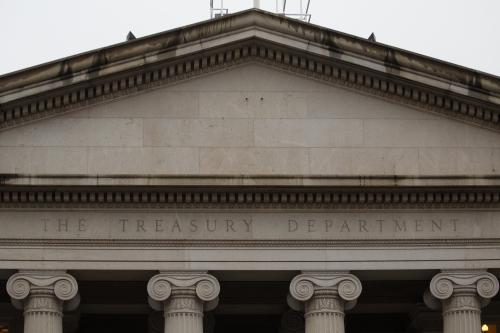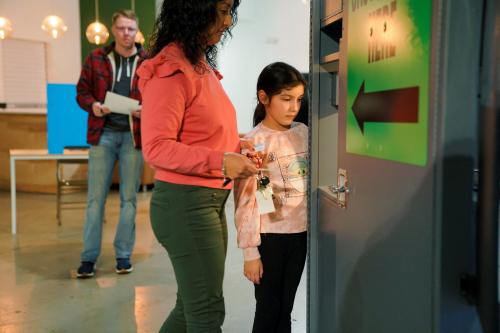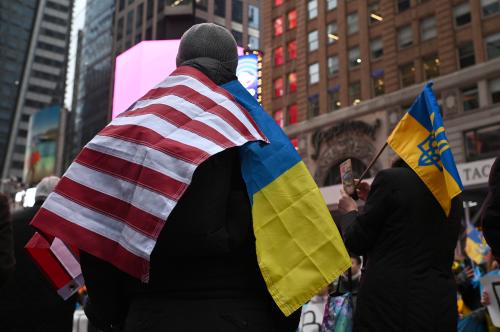On February 28th, the Supreme Court heard arguments in two cases about the Biden administration’s proposed student loan forgiveness program — Biden v. Nebraska and U.S. Department of Education v. Brown. The cases focused on two key questions – do the petitioners meet the constitutional requirement for “standing,” or injury, from the policy, and does the Department of Education have the legal authority to forgive student loan debt? Depending on the Court’s decision, millions of Americans will have a substantial share, if not all, of their student loans forgiven.
Who stands to benefit and what are the implications of the Court’s decision?
Who stands to benefit?
The majority of voters supported student loan forgiveness when President Biden announced his plan to forgive up to $10,000 in student loan debt (or $20,000 for those who received a Pell grant). Nonetheless, there has been ongoing debate about who benefits and the economic implications of widespread forgiveness.
Who benefits most depends on how you define benefit — whether as the amount of forgiveness or share of loans forgiven. Some individuals will receive a larger amount of loan forgiveness because they hold larger loan balances. However, framing benefit as the share of loans forgiven means more lower-balance borrowers will become debt-free. Analysis from the U.S. Census finds that about 29% of student loan borrowers would have their full balances forgiven.
Debt balances — and potential forgiveness — vary by the borrower’s race, gender, and educational attainment. Advanced degree graduates are more likely to have loans and higher balances — graduate school is expensive — but are also on average higher income and less likely to qualify for the policy’s income cap. A smaller share of individuals who never completed college hold loans — but those that do also never received the benefits of a college credential, and between 39%-67% of those borrowers would become debt-free if the policy is enacted. Black borrowers at every level of education are more likely to have student loans for the same education, and the black-white gap in student loan debt more than triples four-years after students earn bachelor’s degrees.
The Legal Questions: Standing
The administration has been playing proverbial “whack-a-mole” with potential standing arguments since they first announced the policy — first clarifying that individuals could opt-out from receiving forgiveness after a potential petitioner claimed injury from a state tax burden on their forgiven loans, and then announcing older, privately held loans were no longer eligible for consolidation to receive forgiveness, amid murmurings of private banks claiming standing on lost account revenue.
Biden v. Nebraska (brought by six states — Nebraska, Missouri, Arkansas, Iowa, Kansas, and South Carolina) offered the most plausible standing argument of the two cases, with the main argument that Missouri could face reduced contributions from the Missouri Higher Education Loan Authority (MOHELA), one of the largest federal student loan servicers. MOHELA is set up as a third-party from the state and has an obligation to contribute to Missouri state university funds, and petitioners argue that if MOHELA has fewer customers due to loan forgiveness, they will be unable to make those obligations (even though they have not made those payments in about 15 years). However, MOHELA has been notably quiet about this argument, except to respond to an inquiry from Rep. Cori Bush (D-Mo.) noting they were not involved in the state’s decision to pursue a lawsuit. Solicitor General Elizabeth Prelogar acknowledged that MOHELA would have standing in a case, and their absence from the suit was highlighted by several justices, including Justice Amy Coney Barrett who has previously rejected challenges to the loan forgiveness program, declining to take up lower court cases based on lack of standing.
A Major Question: Authority
The Department of Justice presented the case for the Secretary of Education having the authority to forgive student loans. Drawing on the Higher Education Relief Opportunities for Students (HEROES) Act of 2003 which has provided justification for the ongoing student loan payment pause, the Department argues they have the authority to forgive student loans. Much of the debate centered around the meaning of the words “waive or modify” and the scope implied by Congress when passing the HEROES Act.
At the heart of the issue is the question of economic impact and whether or not it should factor in legal decisions to waive or modify.
Estimates vary in how much the program will cost, with uncertainty around ultimate take-up of the program. Estimates for the program are high — potentially up to $400 billion over ten years — and the high cost of the program featured heavily in lines of inquiry from Justice Clarence Thomas during Court arguments on Tuesday about whether the Secretary overstepped authority and the policy represented more than a “modification.” Here, though, lines of oral arguments centered on the distinction between a legal question and a policy debate. While the Court may have authority to rule on legal questions of standing and executive interpretation of Congressional acts, other justices argued the economic impact of a policy should not factor in those legal decisions.
Decision Implications
The Court will face an important question of precedent — do they want to establish that the potential loss of state tax revenue or ineligibility to benefit from a policy is sufficient to meet the constitutional standing requirement? Or do they wish to set the precedent that the HEROES Act provides the broad authority for student loan cancelation? The second precedent is less likely to occur again — the HEROES Act is closely tied to national emergencies, and the current one ends on May 11.
Restarting Repayments
Millions of borrowers will face repayment in 2023. While there have been many “final” extensions to the student loan repayment pause, the ending of the national public health emergency on May 11 likely means the current extension will be the last. Student loan payments will resume 60 days following the Supreme Court’s decision (or 60 days following June 30). A key provision of the HEROES Act is that waivers or modification to student loan terms are authorized if they are necessary to ensure individuals “are not placed in a worse position financially” as a result of the national emergency. The Department of Justice argued that this restart of payments is itself a motivating act for loan forgiveness, as the restart of payments after a substantial pause would cause harm to a significant share of borrowers.
The most concerning outcome is that borrowers who are unprepared for their payments to resume may fall into delinquency or default, which can result in wages garnishment and borrowers losing eligibility for additional financial aid. Default is more common among two-year college borrowers and those who attended for-profit institutions. About two out of five borrowers who attended a two-year, for-profit institution defaulted on their loans within five years.
The Biden administration launched their “Fresh Start” initiative in April 2022 to move borrowers who were in default prior to the pandemic into good standing — though borrowers must apply for the program. Borrowers could also sign up for an income-based repayment plan if their monthly payments are too high, though take-up rates on those plans are low. The Biden administration has announced plans for a new income-driven repayment plan that would result in substantially more borrowers having $0 monthly payments, but this plan is still in development, and it is unclear if it will be in place when the student loan payment pause ends.
Questions about the legality and impact of the proposed student loan forgiveness program are not easy ones to answer — and we shouldn’t expect the Court to issue a decision until June. Regardless of the decision, college funding and affordability are in dire need of reform. Supporting existing borrowers through reduced balances and repayment plans is a way to redress past damage — now the work must turn to building a sustainable federal and state system of funding higher education that actually improves students’ economic well-being.







Commentary
The Supreme Court takes up student loan forgiveness — What’s at stake?
March 1, 2023